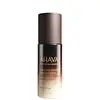What's inside
What's inside
 Key Ingredients
Key Ingredients

 Benefits
Benefits

 Concerns
Concerns

 Ingredients Side-by-side
Ingredients Side-by-side

Water
Skin ConditioningCyclopentasiloxane
EmollientGlycerin
HumectantPvp
Emulsion StabilisingMaris Aqua
HumectantIsodecyl Isononanoate
EmollientCaprylyl Methicone
Skin ConditioningDimethicone
EmollientDiisobutyl Adipate
EmollientHydroxyethyl Acrylate/Sodium Acryloyldimethyl Taurate Copolymer
Emulsion StabilisingPropanediol
SolventTrehalose
HumectantPhenoxyethanol
PreservativePropylene Carbonate
SolventSodium Lactate
BufferingPEG-12 Dimethicone/PPG-20 Crosspolymer
Parfum
MaskingButylene Glycol
HumectantDimethiconol
EmollientDisteardimonium Hectorite
StabilisingHydrogenated Polydecene
EmollientGlucosyl Hesperidin
HumectantPentaerythrityl Tetra-Di-T-Butyl Hydroxyhydrocinnamate
AntioxidantCitric Acid
BufferingLactic Acid
BufferingHydrogenated Vegetable Glycerides Citrate
EmollientBeta-Sitosterol
Emulsion StabilisingGlycine Soja Oil
EmollientAscorbyl Palmitate
AntioxidantPropylene Glycol
HumectantLecithin
EmollientSodium Benzoate
MaskingPotassium Sorbate
PreservativeVitis Vinifera Seed Oil
EmollientAscorbic Acid
AntioxidantOlea Europaea Leaf Extract
PerfumingBiosaccharide Gum-1
HumectantTocopherol
AntioxidantCitrus Reticulata Fruit Extract
Skin ProtectingCitrus Aurantium Sinensis Peel Extract
Skin ConditioningCitrus Aurantium Amara Fruit Extract
Skin ConditioningEvodia Rutaecarpa Fruit Extract
Skin ConditioningSodium Hyaluronate
HumectantAloe Barbadensis Leaf Juice
Skin ConditioningSqualene
EmollientBisabolol
MaskingArgania Spinosa Kernel Oil
EmollientLaminaria Digitata Extract
Skin ProtectingCamellia Sinensis Leaf Extract
AntimicrobialPhoenix Dactylifera Fruit Extract
EmollientDunaliella Salina Extract
Skin ConditioningWater, Cyclopentasiloxane, Glycerin, Pvp, Maris Aqua, Isodecyl Isononanoate, Caprylyl Methicone, Dimethicone, Diisobutyl Adipate, Hydroxyethyl Acrylate/Sodium Acryloyldimethyl Taurate Copolymer, Propanediol, Trehalose, Phenoxyethanol, Propylene Carbonate, Sodium Lactate, PEG-12 Dimethicone/PPG-20 Crosspolymer, Parfum, Butylene Glycol, Dimethiconol, Disteardimonium Hectorite, Hydrogenated Polydecene, Glucosyl Hesperidin, Pentaerythrityl Tetra-Di-T-Butyl Hydroxyhydrocinnamate, Citric Acid, Lactic Acid, Hydrogenated Vegetable Glycerides Citrate, Beta-Sitosterol, Glycine Soja Oil, Ascorbyl Palmitate, Propylene Glycol, Lecithin, Sodium Benzoate, Potassium Sorbate, Vitis Vinifera Seed Oil, Ascorbic Acid, Olea Europaea Leaf Extract, Biosaccharide Gum-1, Tocopherol, Citrus Reticulata Fruit Extract, Citrus Aurantium Sinensis Peel Extract, Citrus Aurantium Amara Fruit Extract, Evodia Rutaecarpa Fruit Extract, Sodium Hyaluronate, Aloe Barbadensis Leaf Juice, Squalene, Bisabolol, Argania Spinosa Kernel Oil, Laminaria Digitata Extract, Camellia Sinensis Leaf Extract, Phoenix Dactylifera Fruit Extract, Dunaliella Salina Extract
Water
Skin ConditioningButylene Glycol
HumectantPropanediol
SolventBetula Alba Juice
AstringentGlycerin
HumectantEriophorum Spissum Flower/Stem Extract
Skin ConditioningPhenoxyethanol
PreservativePEG-40 Hydrogenated Castor Oil
EmulsifyingXanthan Gum
EmulsifyingBetaine
HumectantTrehalose
HumectantUrea
BufferingHydrolyzed Hyaluronic Acid
HumectantEthylhexylglycerin
Skin ConditioningDisodium EDTA
Caprylyl Glycol
EmollientPentylene Glycol
Skin ConditioningSerine
MaskingCopper Gluconate
Skin ConditioningMagnesium Aspartate
Skin ConditioningZinc Gluconate
Skin ConditioningSodium Hydroxide
BufferingPhenethyl Alcohol
MaskingAlgin
MaskingDisodium Phosphate
BufferingGlyceryl Polyacrylate
Pullulan
Sodium Hyaluronate
HumectantPseudoalteromonas Exopolysaccharides
Skin ConditioningSodium Carrageenan
Emulsion StabilisingPotassium Sorbate
PreservativeSodium Salicylate
PreservativeCitric Acid
BufferingGlucose
HumectantPotassium Phosphate
BufferingSorbic Acid
PreservativeMaris Sal
Skin ConditioningChondrus Crispus Extract
Skin ConditioningAlpha-Isomethyl Ionone
PerfumingBenzyl Salicylate
PerfumingCitronellol
PerfumingLimonene
PerfumingLinalool
PerfumingParfum
MaskingWater, Butylene Glycol, Propanediol, Betula Alba Juice, Glycerin, Eriophorum Spissum Flower/Stem Extract, Phenoxyethanol, PEG-40 Hydrogenated Castor Oil, Xanthan Gum, Betaine, Trehalose, Urea, Hydrolyzed Hyaluronic Acid, Ethylhexylglycerin, Disodium EDTA, Caprylyl Glycol, Pentylene Glycol, Serine, Copper Gluconate, Magnesium Aspartate, Zinc Gluconate, Sodium Hydroxide, Phenethyl Alcohol, Algin, Disodium Phosphate, Glyceryl Polyacrylate, Pullulan, Sodium Hyaluronate, Pseudoalteromonas Exopolysaccharides, Sodium Carrageenan, Potassium Sorbate, Sodium Salicylate, Citric Acid, Glucose, Potassium Phosphate, Sorbic Acid, Maris Sal, Chondrus Crispus Extract, Alpha-Isomethyl Ionone, Benzyl Salicylate, Citronellol, Limonene, Linalool, Parfum
 Reviews
Reviews

Ingredients Explained
These ingredients are found in both products.
Ingredients higher up in an ingredient list are typically present in a larger amount.
Butylene Glycol (or BG) is used within cosmetic products for a few different reasons:
Overall, Butylene Glycol is a safe and well-rounded ingredient that works well with other ingredients.
Though this ingredient works well with most skin types, some people with sensitive skin may experience a reaction such as allergic rashes, closed comedones, or itchiness.
Learn more about Butylene GlycolCitric Acid is an alpha hydroxy acid (AHA) naturally found in citrus fruits like oranges, lemons, and limes.
Like other AHAs, citric acid can exfoliate skin by breaking down the bonds that hold dead skin cells together. This helps reveal smoother and brighter skin underneath.
However, this exfoliating effect only happens at high concentrations (20%) which can be hard to find in cosmetic products.
Due to this, citric acid is usually included in small amounts as a pH adjuster. This helps keep products slightly more acidic and compatible with skin's natural pH.
In skincare formulas, citric acid can:
While it can provide some skin benefits, research shows lactic acid and glycolic acid are generally more effective and less irritating exfoliants.
Most citric acid used in skincare today is made by fermenting sugars (usually from molasses). This synthetic version is identical to the natural citrus form but easier to stabilize and use in formulations.
Read more about some other popular AHA's here:
Learn more about Citric AcidGlycerin is already naturally found in your skin. It helps moisturize and protect your skin.
A study from 2016 found glycerin to be more effective as a humectant than AHAs and hyaluronic acid.
As a humectant, it helps the skin stay hydrated by pulling moisture to your skin. The low molecular weight of glycerin allows it to pull moisture into the deeper layers of your skin.
Hydrated skin improves your skin barrier; Your skin barrier helps protect against irritants and bacteria.
Glycerin has also been found to have antimicrobial and antiviral properties. Due to these properties, glycerin is often used in wound and burn treatments.
In cosmetics, glycerin is usually derived from plants such as soybean or palm. However, it can also be sourced from animals, such as tallow or animal fat.
This ingredient is organic, colorless, odorless, and non-toxic.
Glycerin is the name for this ingredient in American English. British English uses Glycerol/Glycerine.
Learn more about GlycerinParfum is a catch-all term for an ingredient or more that is used to give a scent to products.
Also called "fragrance", this ingredient can be a blend of hundreds of chemicals or plant oils. This means every product with "fragrance" or "parfum" in the ingredients list is a different mixture.
For instance, Habanolide is a proprietary trade name for a specific aroma chemical. When used as a fragrance ingredient in cosmetics, most aroma chemicals fall under the broad labeling category of “FRAGRANCE” or “PARFUM” according to EU and US regulations.
The term 'parfum' or 'fragrance' is not regulated in many countries. In many cases, it is up to the brand to define this term.
For instance, many brands choose to label themselves as "fragrance-free" because they are not using synthetic fragrances. However, their products may still contain ingredients such as essential oils that are considered a fragrance by INCI standards.
One example is Calendula flower extract. Calendula is an essential oil that still imparts a scent or 'fragrance'.
Depending on the blend, the ingredients in the mixture can cause allergies and sensitivities on the skin. Some ingredients that are known EU allergens include linalool and citronellol.
Parfum can also be used to mask or cover an unpleasant scent.
The bottom line is: not all fragrances/parfum/ingredients are created equally. If you are worried about fragrances, we recommend taking a closer look at an ingredient. And of course, we always recommend speaking with a professional.
Learn more about ParfumPhenoxyethanol is a preservative that has germicide, antimicrobial, and aromatic properties. Studies show that phenoxyethanol can prevent microbial growth. By itself, it has a scent that is similar to that of a rose.
It's often used in formulations along with Caprylyl Glycol to preserve the shelf life of products.
Potassium Sorbate is a preservative used to prevent yeast and mold in products. It is commonly found in both cosmetic and food products.
This ingredient comes from potassium salt derived from sorbic acid. Sorbic acid is a natural antibiotic and effective against fungus.
Both potassium sorbate and sorbic acid can be found in baked goods, cheeses, dried meats, dried fruit, ice cream, pickles, wine, yogurt, and more.
You'll often find this ingredient used with other preservatives.
Learn more about Potassium SorbatePropanediol is an all-star ingredient. It softens, hydrates, and smooths the skin.
It’s often used to:
Propanediol is not likely to cause sensitivity and considered safe to use. It is derived from corn or petroleum with a clear color and no scent.
Learn more about PropanediolSodium Hyaluronate is hyaluronic acid's salt form. It is commonly derived from the sodium salt of hyaluronic acid.
Like hyaluronic acid, it is great at holding water and acts as a humectant. This makes it a great skin hydrating ingredient.
Sodium Hyaluronate is naturally occurring in our bodies and is mostly found in eye fluid and joints.
These are some other common types of Hyaluronic Acid:
Learn more about Sodium HyaluronateTrehalose is a disaccharide made of two glucose molecules (glucose is sugar!). Trehalose is used to help moisturize skin. It also has antioxidant properties.
As a humectant, trehalose helps draw moisture from the air to your skin. This helps keep your skin hydrated.
Due to its antioxidant properties, trehalose may help with signs of aging. Antioxidants help fight free-radical molecules, unstable molecules that may damage your skin.
In medicine, trehalose and hyaluronic acid are used to help treat dry eyes.
Some animals, plants, and bacteria create trehalose as a source of energy to survive freeze or lack of water.
Learn more about TrehaloseWater. It's the most common cosmetic ingredient of all. You'll usually see it at the top of ingredient lists, meaning that it makes up the largest part of the product.
So why is it so popular? Water most often acts as a solvent - this means that it helps dissolve other ingredients into the formulation.
You'll also recognize water as that liquid we all need to stay alive. If you see this, drink a glass of water. Stay hydrated!
Learn more about Water